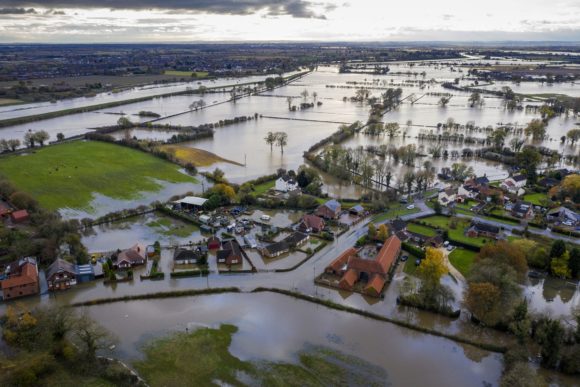Market conditions for U.K. non-life insurers were difficult in 2019 as they continued to face strong competition and claims inflation, according to a report published by AM Best.
Companies have had to contend with changes in the discount rate — the so-called Ogden rate — used to calculate lump-sum personal injury compensation, claims inflation due to higher repair costs and challenging investment market conditions driven by political and economic uncertainty, said the report titled “U.K. Non-Life Insurers Face Strong Competition and Claims Inflation.”
The report noted that competition in the U.K. non-life market was intense in 2019, putting underwriting earnings under pressure.
“Premium rates in the property sector remain depressed in spite of rising claims costs. Meanwhile, rate increases achieved for motor business have proved unsustainable as insurers anticipate the cost benefits of measures outlined in the Civil Liability Act,” said Catherine Thomas, senior director, analytics, in a statement accompanying the report.
On a positive note, the AM Best report said, motor insurers have broadly welcomed the changes to the U.K.’s personal injury compensation system set out in the Civil Liability Act, with key measures expected to come into force during 2020.
“Planned changes to the personal injury compensation system should be positive for claims experience. However, AM Best notes that reforms are still to be implemented and there is considerable uncertainty as to what impact they will have on the frequency and severity of bodily injury claims,” Thomas added.
Long-Tail Liability Claims
In the liability sector, the long-tail nature of the business written means that reserve movements tend to make a material contribution to overall results, the report said, noting that in 2016, and to a lesser extent in 2017, calendar-year results were hit by reserve strengthening associated with the reduction in the personal injury discount rate.
On an accident-year basis, the sector has reported combined ratios in excess of 100% in four out of the past five years, said AM Best. “Claims for industrial disease, particularly noise-induced hearing loss, remain elevated, but appear to be falling following a steep rise between 2011 and 2014,” added the report.
Many U.K. non-life insurers have reduced their exposure to these long-tail claims with the transfer of historical liabilities to run-off specialists, said AM Best, pointing to the examples of Aviva, QBE, AXA and RSA, which have all chosen to dispose of their latent U.K. liability reserves in recent years.
“Deals have been driven by the introduction of Solvency II and the more prevalent use of capital models, which have increased insurers’ focus on the most efficient use of capital,” said the report.
In general, AM Best said, insurers are seeking “to redeploy capital from the run-off of long-tail reserves to potentially more value-added activities, such as writing new business.”
Brexit Uncertainty
The report noted that while the uncertainty associated with Brexit continues to weigh on the U.K. economy, from an operational point of view, AM Best-rated U.K.-domiciled insurers are generally well-prepared. Further, those that plan to continue to underwrite European Economic Area business have put in place arrangements to ensure that they are able to do so following a loss of passporting rights, the ratings agency said.
AM Best pointed out that for the retail non-life sector, a loss of passporting rights is not a significant issue as most insurers underwrite principally domestic business.
Nevertheless, all U.K. insurers will be affected by the impact of Brexit on the UK economy, said the report. “While the effects are difficult to predict with any degree of certainty, they are likely to be negative, at least in the short term,” AM Best said, explaining that potential issues include a further weakening of sterling, which could increase claims inflation, as well as an increasingly challenging investment environment.
“If economic conditions deteriorate, the demand for insurance is likely to reduce, which would have negative implications for premium volumes.”
Flood Losses
“Weather experience in the first half of 2019 was relatively benign, but insurers’ full year results will be hit by losses relating to the floods that affected Yorkshire and the Midlands in November,” said AM Best, quoting the Association of British Insurers (ABI), which said insurance claims for the floods are expected to reach £110 million (US$143.2 million).
Of this amount, it is estimated that £45 million (US$58.6 million) relates to personal property, £58 million (US$75.5 million) to commercial property and £7.5 million (US$9.8 million) to motor.
A complimentary copy of this market segment report, can be downloaded from AM Best’s website.
Source: AM Best
Photograph: Flooding hits the Fishlake area in Doncaster, England on Nov. 12, 2019. Photo taken by Christopher Furlong/Getty Images.
Topics USA Carriers Claims Europe Flood AM Best Liability Property Casualty
Was this article valuable?
Here are more articles you may enjoy.



 Expense Ratio Analysis: AI, Remote Work Drive Better P/C Insurer Results
Expense Ratio Analysis: AI, Remote Work Drive Better P/C Insurer Results  New York Governor Hochul Vows to Tackle Insurance Affordability, Litigation and Fraud
New York Governor Hochul Vows to Tackle Insurance Affordability, Litigation and Fraud  Florida Lawmakers Ready for Another Shot at Litigation Funding Limits
Florida Lawmakers Ready for Another Shot at Litigation Funding Limits  MAPFRE Accuses AAA of Violating Long-Time Exclusive Marketing Agreement
MAPFRE Accuses AAA of Violating Long-Time Exclusive Marketing Agreement 

